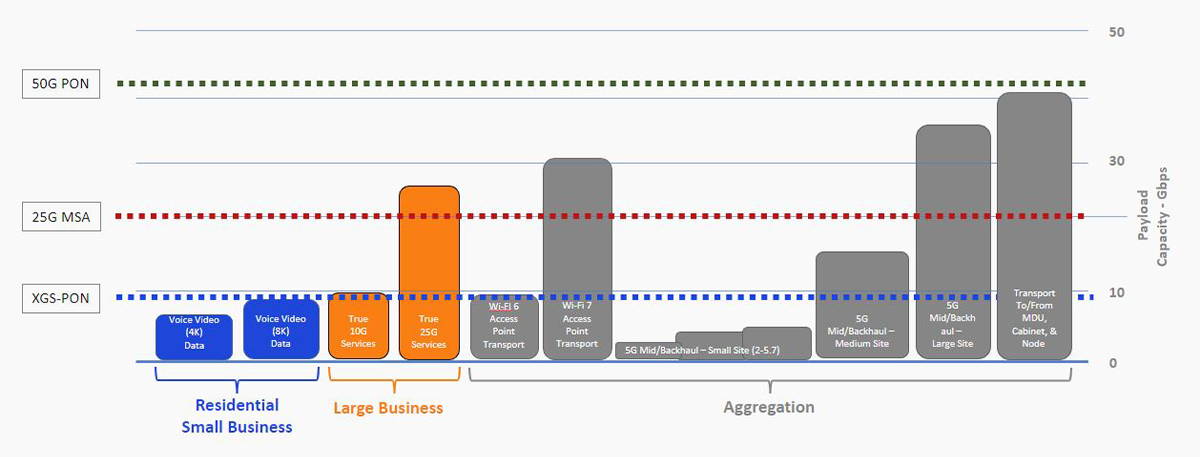Top 3 Reasons To Skip 25G and Go Straight to 50G PON

To ensure your broadband network infrastructure can deliver services today and well into the future, broadband service providers (BSPs) must focus on the fundamentals. These include selecting products that support industry standards, identifying critical use cases for network needs over the next decade, and looking for solutions that leverage economies of scale. With this in mind, let’s look at the case for 25G PON MSA (Multi-Source Agreement).
Three Fundamental Reasons To Skip 25G PON MSA
First, 25G PON MSA is not an industry standard, and there is nothing multi-source about it. A single, vertically integrated vendor controls the 25G PON MSA main PON component supply—and since the supply chain is a single source, it can be prioritized to meet the vendor's needs over others. Given past dynamics in supply shortages, this is the last thing BSPs should worry about when deploying new technology. Additionally, the emergence of 50G PON technology with higher bandwidth and better cost efficiency has made 25G PON less attractive.
Second, with 21 Gbps of payload capacity, 25G PON MSA is insufficient to meet the needs of upcoming use case drivers over the next decade. The chart below compares services type versus PON technologies, demonstrating that 10G PON, specifically XGS-PON, meets the demands of residential, small business, and aggregation for the foreseeable future. Future applications requiring capacity beyond 10G—service convergence for private networks, large companies, wireless, and mobile networks aggregation—require a higher capacity than 25G PON can deliver. For instance, Wi-Fi 7 access point transport supports peak throughput rates of over 40 Gbps. Deploying a technology that runs out of gas for its primary use case makes no sense. As a result, the industry focus has shifted towards 50G PON.
Figure 1: Service and PON Technology Assessment

Third, deploying technologies without a clear path to deliver economies of scale that generate a higher return on investment is impractical—especially in an industry where you provide connectivity to billions of subscribers. That is the challenge faced with PON technology. Combined economies of scale and innovation have delivered PON technologies from GPON to XGS-PON. With deployment by global service providers, you have the volume to sustain PON technology at a record pace.
Why Choose 50G PON
As you consider a broadband access network solution, skip the deficiencies of 25G PON MSA and choose 50G PON—it has all the fundamental elements needed for selecting future-proof technology.
50G PON supports industry standards (ITU-T G.9804.3).
50G PON seamlessly coexists on the same optical distribution network (ODN) as GPON and XGS-PON, allowing flexible evolution at your pace of growth.
50G PON leverages a global market and supply chain to meet the total cost of ownership required for critical use cases.
50G PON can cover all the use cases and applications for the next era of fiber to the x (FTTx).
To learn more, download our recent white paper, “The New Era of FTTx.”
Related Articles

